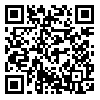Volume 24, Issue 3 (2021)
mjms 2021, 24(3): 0-0 |
Back to browse issues page
Ethics code: IR.SBMU.MSP.REC.1395.447
Download citation:
BibTeX | RIS | EndNote | Medlars | ProCite | Reference Manager | RefWorks
Send citation to:



BibTeX | RIS | EndNote | Medlars | ProCite | Reference Manager | RefWorks
Send citation to:
Rohani R. Deep brain stimulation, epilepsy and inflammation: a brief review. mjms 2021; 24 (3)
URL: http://mjms.modares.ac.ir/article-30-59916-en.html
URL: http://mjms.modares.ac.ir/article-30-59916-en.html
Department of Biology and Anatomical Sciences, School of Medicine, Shahid Beheshti University of Medical Sciences and Health Services, Tehran, Iran , raziehr@yahoo.com
Abstract: (1519 Views)
Epilepsy is among the wide spread neurological disease. Considering that the occurrence of seizures in 20 to 40% of epileptic patients is resistant to drug therapy, many researches are being conducted to reach new methods of epilepsy treatment. The most common epileptic syndrome in adults is temporal lobe epilepsy. In most patients with temporal lobe epilepsy, the structures of the middle temporal lobe, including the hippocampus, are involved in seizure generation and propagation. One of the relatively new therapies for controlling drug-resistant seizures is direct stimulation of the epileptic focus by electrical stimuli. Numerous studies have shown that the application of deep brain electrical stimulation (DBS) has anticonvulsant effect on the epileptic focus, but the mechanism of its anticonvulsant effect is not yet fully understood. Many abnormalities occur following seizures and it can be postulated that DBS may prevent or reduce these abnormalities. One important abnormality is inflammation. Here we briefly reviewed the probable relationships between anticonvulsant action of DBS and inflammation.
Send email to the article author
| Rights and permissions | |
 |
This work is licensed under a Creative Commons Attribution-NonCommercial 4.0 International License. |







